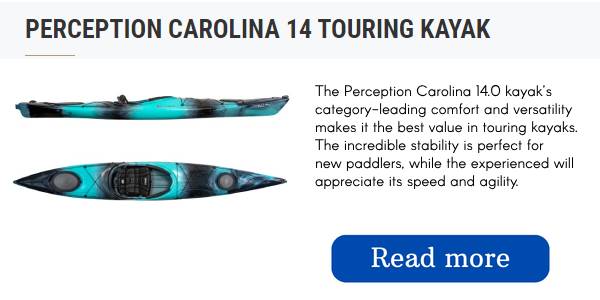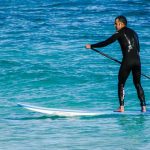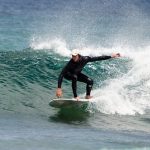As we move into 2023, those looking to purchase an inflatable paddle board will be bombarded with a wide array of perplexing options. Supply is ample in the paddle board market, with recent brands appearing quickly to benefit from the surge in the fastest-rising water sport.
Many online sellers, businesses and labels have become adept at spreading misleading information, making untrue claims about their goods and fabricating evidence of their prosperity through made up customer ratings or sponsored “expert” remarks by people with almost no knowledge of stand up paddle boarding.
This Inflatable Paddle Board Buyer’s Guide is designed to provide clarity and elucidate certain technical qualities that will enable you to distinguish between boards and make a judicious purchase decision.
For individuals who have just started to get into paddle boarding, let’s begin with some fundamental facts concerning the types of boards and their applications. People who are already familiar with the fundamentals may want to go straight to the topics on fin systems, board making, and deck riggings, as they are essential details when looking at boards to buy.
You will also be able to gain knowledge about the essential items to use alongside your new inflatable paddle board, such as pumps, oars, life jackets, and tethers.
How to buy an inflatable paddle board right for you?
Board Categories
If you are a beginner in paddleboarding, you may want to consider buying an all-purpose inflatable SUP so that you can have a good experience in various paddleboarding activities and locations.
If you have prior exposure to SUP or other board sports and wish to have high speed, it may be beneficial for you to search for the sport/performance board section.
If staying upright and feeling secure while learning how to paddle board is important to you, it’s best to acquire an exceptionally balanced blow-up SUP board.
If you’re buying a paddleboard for a particular purpose, you can find boards designed specifically for that purpose. You have the option of selecting boards made for stand-up paddle surfing, stand-up paddle yoga, whitewater stand-up paddleboarding, stand-up paddle touring, and even for stand-up paddle racing.
Are you searching for a Stand-Up Paddleboard (SUP) for your children or a SUP specifically designed for pursuits such as fishing, windsurfing, or group paddling? Figuring out which type of board you want is the first step to reducing your options.
Brand Selection
Brands usually have a specific type of inflatable Stand Up Paddle Board they specialize in, which means you can make your selection simpler by looking for the brands that show expertise in the kind you have picked.
In our shop, we pay close attention to just a few brands that are renowned for their superior construction, look, and customer service. There is a wide variety of options to select from, however.
Earth River SUP specializes in inflatable paddle boards designed to operate effectively in a variety of settings, such as lakes, rivers, and seaside waters.
Red Paddle Co provides a wide variety of boards, including some specifically made for activities like racing and surfing.
NRS and Hala SUP specialize mostly in whitewater-specific models.
Starboard SUP makes use of its origins in the windsurfing area and has an array of both rigid and inflatable paddle boards specifically designed for both competitive racing and surfing.
People who are trying to stay within a budget and looking for an affordable stand up paddleboard should consider the Fanatic brand. These are good choices for those who do not require an intense paddling experience.
Naish provides boards for those interested in touring and competing, although they have some cost-effective all-around SUP boards as well.
Different brands may come together in a variety of areas, but this provides a solid basis from which to begin looking at their selections.
Many other companies have boards for sale, but most of them are fairly average with no standout features or perks. Boards that have been advertised with a lot of enthusiasm and fanfare are often built with weak builds, in contrast to what their promotions suggest.
Terms such as “military-grade” and “4-layer” might sound impressive, however, compromises were likely made to reduce the cost of the boards, and this information is often disregarded and spread over and over again by those involved in online advertising.
Clearance or Open Box Models
Customers who have a limited amount of money to spend don’t have to avoid buying good-quality brands. Many paddle boarders prefer to own the latest versions, which is why they tend to sell their high quality inflatable SUP boards in order to purchase a newer model for the upcoming season.
A pre-owned paddleboard that is well-maintained and meets your needs can be an appealing choice compared to the less expensive one-layer inflatable SUPs found at Costco or Amazon.
However, with a used board, you cannot be certain of its quality unless you know the seller personally and could thus be saddled with someone else’s troubles. It is important to remember that warranties usually cannot be transferred, so it is essential to exercise caution in this regard.
You may discover awesome bargains on top-notch boards if you purchase them on markdown at the end of the season or while a model update is in progress in our SUP Deals and Clearance area. Luxury labels usually make improvements over time so investing in an earlier edition is still a great choice.
Pre-owned SUPs that come in open packages constitute an economical option for quality equipment, but such products may be difficult to come by. We occasionally have boards that were utilized for exhibition at an event or tried out on the water available to buy, although there is sometimes a great requirement for certain versions.
It is wise to spend as much as possible on the best board with a definite aim of what kind of paddling you aim to do.
Board Size and Shape Considerations
After you have opted to go with a certain type of board, and have arrived at a manageable number of brands to select from, you must then decide which board is best suitable for your individual requirements.
Generally speaking, larger paddlers should select bigger boards, but whether or not that is right for a particular person is dependent on their abilities and preferences.
While there are many nuances to board shape and size considerations, here are some general principles to get you started on understanding how a board’s size and shape affect its performance:
- A longer board will have more glide than a shorter one.
- A narrower board will be faster than a wider board
- A wider board will be more stable than a narrower board.
- Boards that are wider at the tail will be more stable than boards with a narrow tail.
- Boards with a narrow tail will turn more quickly during surfing maneuvers
- Thicker boards support more weight than thinner boards but there are serious disadvantages to an excessively thick board.
- Thinner boards feel more stable than thicker boards when supporting the correct amount of weight.
Generalizations can assist you in selecting options so that you can focus on the precise specifics of those boards that fit your initial requirements.
What’s the Difference Between a Stand Up Paddle Board and a Surfboard?
A principal distinction between paddle boards and surfboards is the dimensions. Surfboards are normally much smaller than paddle boards, making it more difficult to stay steady and balanced while riding them.
An alternative way to express this is to say that paddle boards can accommodate multiple people, or the individual operating it may wish to take their pet along when gliding on the SUP.
Transporting a young child or an animal would be quite a challenge using a normal-sized surfboard. The upside is that you are able to surf with either board, however a traditional surfboard is not much use on flat water.
Origins of Paddle Boarding
The roots of today’s paddle boarding are linked to the Beach Boys, who taught surfing in Waikiki Beach in the 1940s and 1950s. They used longer boards, combined with canoe paddles, to keep up with their surf pupils and to also take pictures of them.
The concept of paddle boarding gained traction in the late 90s and early 2000s due to Dave Kalama and Laird Hamilton, two Hawaiian big wave surfers, who incorporated it into their fitness regimen when there were no good waves. This has now become an enjoyable activity that everyone in the family can partake in.
Types of Paddle Boards
Boards used for paddling come in a range of designs and dimensions to accommodate different paddling techniques. Here is a breakdown of the most popular types of paddle boards:
All-around paddle boards are incredibly versatile and can be used for numerous activities, for instance, flatwater paddling, surfing, yoga, and fishing. These paddle boards are usually broader and more substantial than other kinds, making them reliable and simple to keep steady on.
Paddle boards made for traveling are elongated and created to enhance performance while paddling so the SUP can voyage through bigger spaces in a more timely way and continue on a more direct route in comparison to other kinds of stand up paddle boards.
The greater board width of a touring paddle board lets the displacement hull stand above the water, which enables it to smoothly slide through the liquid. Using less energy is necessitated when utilizing a displacement hull, rather than a planing hull, which glides across the water’s surface.
This board is perfect if you’re considering doing long distance paddling.
Stand up paddle boards made for surfing are crafted with the intention of riding on the swell of a wave. These boards tend to be more compact and skinnier compared to typical all-purpose boards, and feature planing hulls which enable increased maneuverability when in the water.
Boards utilized for surfing often include a concave deck, providing an added advantage to ensure the feet of the rider stay secure and in place while moving through choppy waters.
Yoga paddle boards resemble the traditional all-around variety, but often possess a wider structure to create a more solid sensation. Most boards usually come with a soft and smooth deck pad in order to give comfort while practicing yoga, and some even come with fasteners to secure things such as yoga blocks or towels with bungee cords.
Stand-Up Paddleboard Yoga is attractive to people of all experience levels in paddling.
Stand Up Paddleboards created for fishing can be great for fishermen who want to be in a reliable setting while they’re angling. Boards of this type usually offer plenty of room for tackle containers and ice chests, plus features such as fishing rod holders and anchoring setups.
Race stand-up paddleboards have a lot of similarities to touring SUP boards, yet are usually more slender and lighter to give an extra boost of velocity to the paddleboarder compared to a tour board.
Typically, these paddle boards are very difficult to use, and they can be difficult to remain balanced on unless you are an experienced paddler. In order to cover extended distances, lightweight materials such as carbon fiber are usually used when constructing a racing paddle board.
River paddle boards tend to be more compact and wide in shape as larger boards are harder to handle in a river environment. River boards usually have flat bottoms in order to prevent them from nosediving.
A fin base is often supplemented with a smaller fin as it is less prone to becoming caught on rocks. It is advised to use a SUP paddle that has an ABS plastic blade. River paddling can be strenuous and hazardous, so it’s recommended to take lessons and buy the necessary safety appliances before attempting it.
Rigid versus Inflatable Paddle Boards
When the sport initially became popular, those who were quick to take advantage of it all used rigid boards with a foam core to paddle. These tough stand-up paddleboards were esteemed for their tranquil voyage and plentiful board space.
A major disadvantage of these SUPs was how to store and transport them. It was impossible to fit them into limited areas, and you needed a pretty big car if you wanted to take them on a journey.
An inflatable version of the paddle board quickly became available, which seemed to resolve the issues that had been present before.
A blow-up board can be quickly moved in its tote bag in the boot of an auto. The initial inflatable paddle board had some drawbacks; it usually was a solitary level of PVC more than a stitched drop stitch center, which caused the board to be josty when in the water and “taco,” which is when the nose and tail go up higher than the water.
These difficulties were nonexistent on a hard-surfaced paddle board. It should be remembered that many relatively inexpensive inflatable SUPs still use this traditional technology.




